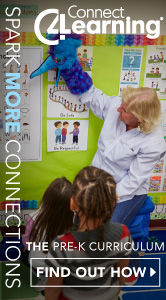Creative Uses for Tree Bark
Mary Pickford
“Bark has such intriguing textures to explore – bumpy, smooth, prickly, and rough,” write Sandra Duncan and Jody Martin in their beautiful book, Bringing the Outside In: Ideas for Creating Nature-Based Classroom Experiences for Young Children. “Since no two pieces of bark are ever the same, opportunities for children’s exploration are infinite. Including bark in the block area adds a whole new dimension to children’s constructions – through children’s imaginations bark pieces are transformed into bridges, skyscrapers, and magical kingdoms. Putting bark in the science corner leads to investigations of its textures and ridges. Painting on bark creates an interesting and unique canvas.”
The authors note that children can help forage for bark outdoors, but should only “look around on the ground. Do not rip bark from a living tree because it may harm the tree or even cause its death.”
For more information about Exchange's magazine, books, and other products pertaining to ECE, go to www.ccie.com.
|
© 2005 Child Care Information Exchange - All Rights Reserved | Contact Us | Return to Site


